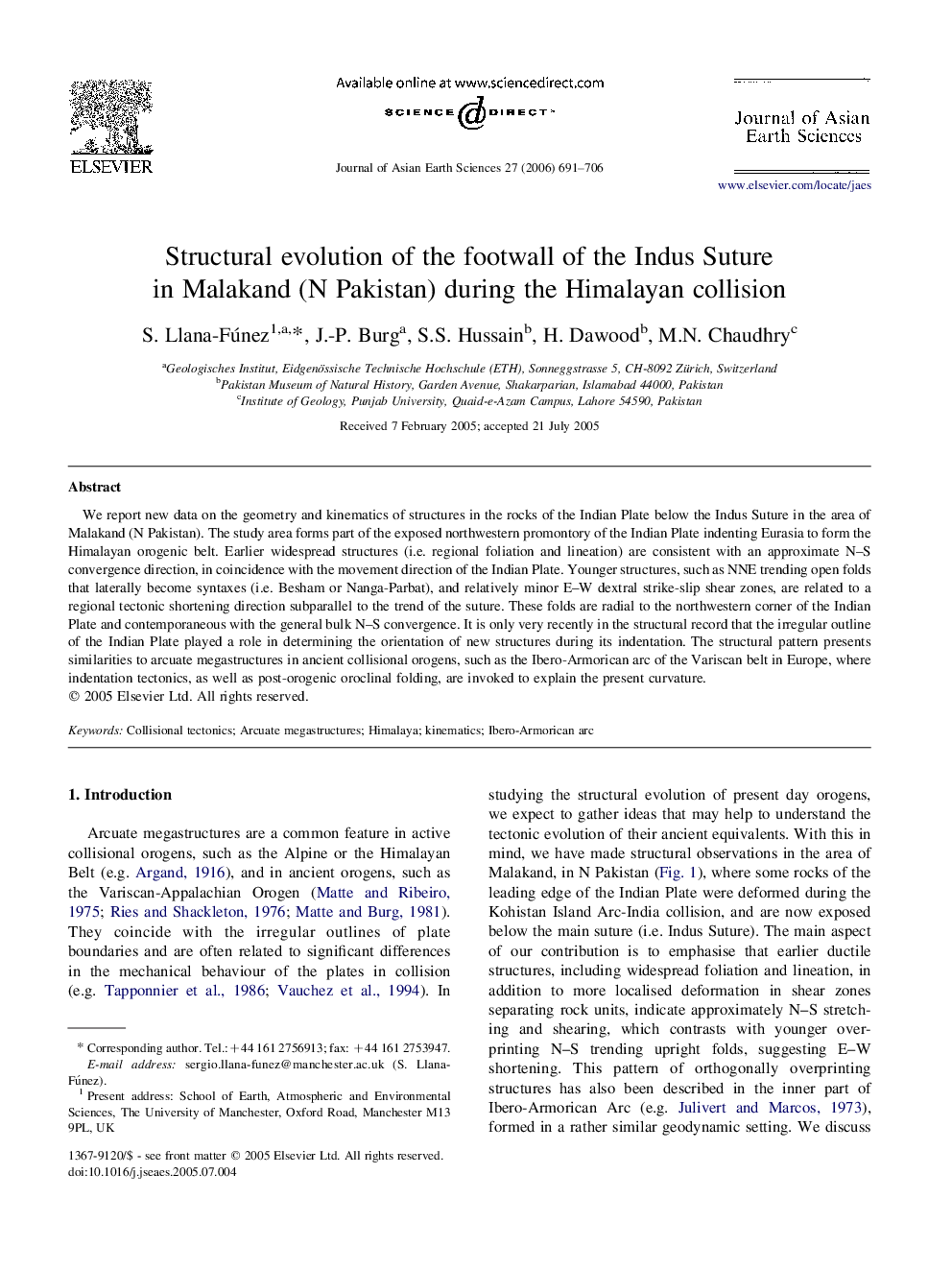| کد مقاله | کد نشریه | سال انتشار | مقاله انگلیسی | نسخه تمام متن |
|---|---|---|---|---|
| 4732471 | 1356866 | 2006 | 16 صفحه PDF | دانلود رایگان |

We report new data on the geometry and kinematics of structures in the rocks of the Indian Plate below the Indus Suture in the area of Malakand (N Pakistan). The study area forms part of the exposed northwestern promontory of the Indian Plate indenting Eurasia to form the Himalayan orogenic belt. Earlier widespread structures (i.e. regional foliation and lineation) are consistent with an approximate N–S convergence direction, in coincidence with the movement direction of the Indian Plate. Younger structures, such as NNE trending open folds that laterally become syntaxes (i.e. Besham or Nanga-Parbat), and relatively minor E–W dextral strike-slip shear zones, are related to a regional tectonic shortening direction subparallel to the trend of the suture. These folds are radial to the northwestern corner of the Indian Plate and contemporaneous with the general bulk N–S convergence. It is only very recently in the structural record that the irregular outline of the Indian Plate played a role in determining the orientation of new structures during its indentation. The structural pattern presents similarities to arcuate megastructures in ancient collisional orogens, such as the Ibero-Armorican arc of the Variscan belt in Europe, where indentation tectonics, as well as post-orogenic oroclinal folding, are invoked to explain the present curvature.
Journal: Journal of Asian Earth Sciences - Volume 27, Issue 5, 15 September 2006, Pages 691–706